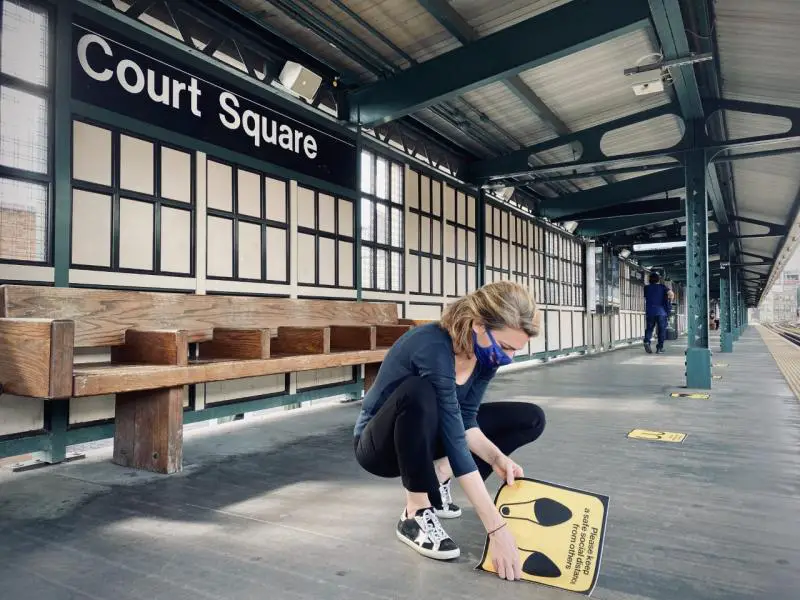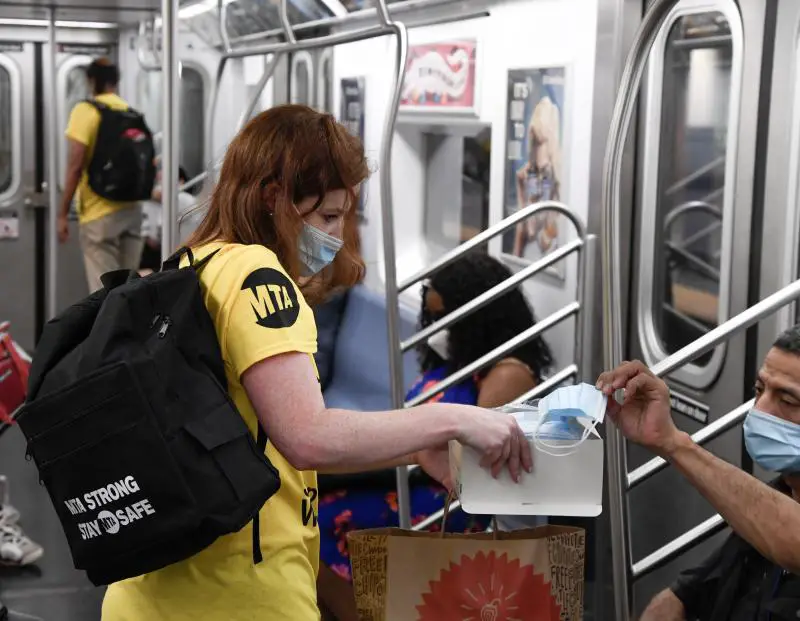Public transit can be a lifesaver. It can enable you to get to work and run errands, all without the need to own and maintain a vehicle. Unfortunately, it also has the potential to lower your quality of life.
That’s because riding the bus or the train can make you sick if you aren’t careful.
Not only can you get a cold or the flu, your local transit system and coronavirus also go hand-in-hand. With multiple people crowded into a small area with recirculated air, you greatly increase your chances of getting sick.
That doesn’t mean you have to stay at home because you don’t have your own vehicle! There are ways you can reduce your chances of getting sick when you use public transit.

Photo: Metropolitan Transportation Authority.
Be Picky About the Transit You Take
There are many modes of public transport. Not all of them are created equal if you want to avoid getting sick.
The more passengers there are in the vehicle at one time, and the more often passengers get off and get on, the more likely you are to be exposed to germs that could make you sick. If you are able, stick to modes of transportation with fewer passengers. That might mean taking a cab or asking coworkers if you can carpool with them instead of taking the bus or the train.

If you do have to take the bus or the train, consider a route that doesn’t make any stops between where you got on and your destination. You may also want to skip a bus that looks particularly full and wait for the next one to see if there are fewer people.
Avoid Sitting Right Next to Other People
It has been recommended that you do your best to stay six feet away from other people in order to avoid getting COVID-19. That means trying your best not to sit next to other people on the bus.
When you get on public transit, choose a seat as far away from other people as you can. That way, if they happen to sneeze or cough, their germs won’t be propelled straight into your face.
Do a Seat Check
Not only do you have to watch out for the people on the bus, but you should also take a quick look at where you’re thinking of sitting before you actually sit down.
Take a look at the seat before you sit down. If it looks visibly soiled, choose a different place to sit.
You should also look at the area around the seat. Is there garbage on the floor or visible smudge marks on the railing? If so, you should look for another place to sit.
It can also help if you’re prepared with antibacterial wipes and disposable cloths. Wipes can be used to clean railings before you sit down, and a disposable cloth can be sat on and thrown away when you’re done.
Wear a Mask

Photo: Metropolitan Transportation Authority.
As much debate as there has been over whether or not people should be required to wear masks, they definitely work. Wearing one on public transport will prevent you from spreading your germs to others, but they also have the potential to prevent you from catching germs from others too.
The type of mask you choose matters. If you have an N99 or N95 mask, you should use it. If you don’t, disposable surgical masks come in at a close second in effectiveness, and they are now relatively easy to get ahold of. Cloth masks are the least effective, but they are better than nothing if you have no other option.
Avoid Touching Unnecessary Surfaces
One of the best things you can do when taking public transport, whether you’re on the bus, in a cab, or a train is to avoid touching unnecessary surfaces with your hands. That includes things like:
-
Railings getting on the bus
-
Railings around the seats
-
Windows
-
Backs of seats
You should also avoid touching your face, especially while you’re on public transit. If you do use the railing to climb up the stairs or you touch the back of the seat ahead of you, and then you scratch your nose or rub your eye, you could pick up germs that can make you sick.
Clean Your Hands as Soon as You Reach Your Destination
Handwashing is extremely important if you don’t want to get sick, whether you’re avoiding the coronavirus, the flu, or a simple cold. However, how you wash your hands can mean the difference between staying well and getting sick.
Make sure you wash the backs of your hands, between your fingers, and under your fingernails for at least 20 seconds.
Even more importantly, you need to wash your hands as soon as you get off the bus. If you can’t find a sink as soon as you get off, consider carrying hand sanitizer so you can clean your hands before you have the chance to spread around any germs you may have picked up.
Don’t Be Afraid to Move Seats
Regardless of what kind of public transit you’re taking, you should never be afraid to move seats. You may not have a choice when sitting next to someone, but that doesn’t mean you can’t move as soon as another seat that enables you to follow social distancing guidelines opens up. You may also decide to move because the person you’re sitting near is coughing or sneezing a lot.
Don’t be afraid to say no either. If someone asks if they can sit next to you, but there are clearly other seats available, let them know that you’re practicing social distancing and point out a seat that allows them to social distance as well.
There can be a lot of germs on public transit, but that doesn’t automatically mean you are going to get sick. Whether you choose a cab over the bus, you upgrade your mask, or you bring antibacterial wipes to clean the seat before you sit down, there are things you can do to reduce the number of germs you come in contact with.

James Tapparo II/Flickr





